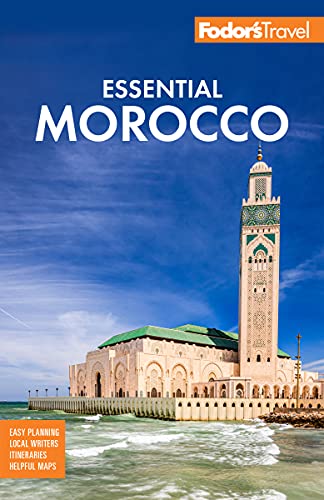Western Sahara
In 1975 more than 350,000 unarmed Moroccans walked south in the Green March, taking possession from the Spanish of what are now officially known as Morocco's Southern Provinces (though internationally known as the Western Sahara). Since 1975, conflict between the Polisario (Saharan separatists) and the Moroccan military has been sporadic, and a referendum to determine the province's political future has been postponed numerous times. There is currently a ceasefire, and the U.N. has a large presence in the big cities. Foreign visitors to the area are likely to be surfers or here on business, as Morocco is encouraging significant investments in the area. The main attraction for the traveler, aside from the journey to the middle of nowhere, is a chance to set foot in the Sahara, as the cities are new and charmless, food and wine scarce, and the military presence pervasive. However, there are several towns worth visiting before crossing the disputed border.
At the time of writing, tourists with Moroccan entry stamps were free to travel to the Southern Provinces. However, the situation is politically charged, so check before you head this far south and be prepared for numerous police checkpoints. These are usually amicable, but it could be worth it to prepare a form with your vital information printed in French, especially if you don’t speak the language (which has replaced the Spanish of the colonial era).
The Towns
Guelmim is known as the Gateway to the Sahara, and the ensuing drive south to Tan-Tan—along which the landscape turns ever more arid and desertlike—illustrates why. It's an easy trip (107 km [66 miles] south of Tiznit), shooting through empty stretches of flat hamada (stony desert) broken only by the occasional village or café and one gas station. Although you're likely to catch your first glimpse of large camel herds here, the town doesn’t have much to entertain a tourist, and even the exotic-sounding camel market is little more than an average weekly souk.
As you approach Tan-Tan (125 km [78 miles] south of Guelmim), you may think you're seeing a giant mirage. Fear not, for your eyes do not deceive you: there really are two enormous kissing camels forming an archway over the road into town. Carved out of stone in the 1970s, these affectionate creatures are one of Tan-Tan's chief claims to fame and the subjects of many a Western Sahara postcard. Tan-Tan's main significance (beyond the kissing camels) is that it was the official starting point for the Green March of 1975. The southern end of Boulevard Mohammed V is Tan-Tan's main square, Place de la Marche Verte (Green March Square). This is the main transportation hub for taxis and cars headed back to Guelmim and on to Laayoune. The town makes a logical stop on a trip farther south, and is a passable choice for an overnight stay, although some tourists report unfriendly locals. The beach here, Tan-Tan Plage, is popular with surfers.
At 150 km (93 miles) south of Tan-Tan, the modest fishing village of Akhfenir has the first gas station, cafés, and stores on the coastal route after Tan-Tan. Footpaths down to a gorgeous beach make Akhfenir a good place for an en-route swimming stop. At 85 km (53 miles) south of Akhfenir, you'll find the largest of the few coastal towns on this route and the last before the disputed border. Tarfaya offers panoramic ocean views, excellent seafood, and a nice place to explore before the road turns inland.
Laayoune, the former capital of the Spanish Sahara, has thrived under Moroccan rule. A calm and easy place to navigate, Laayoune (115 km [71 miles] south of Tarfaya) makes the best base for trips around the Western Sahara. It's quite impressive to look around at surrounding dunes and landscape and contemplate the very existence of a town this size in the middle of the Sahara Desert. Moroccan investment is pouring into the town to capitalize on the benefits of deep-sea fishing, and any Moroccans one encounters are as likely to be from elsewhere, drawn here by construction work, fishing, and government subsidies.
Smara's central site has long been an important Saharan caravan stop, but most of the fun, it must be said, is in getting here. Once you are in Smara, however, the remains of the Palace Ma el-Ainin make a great stopping point. There is a guardian who will be happy to show you around, if you can find him.
Dakhla is the last frontier for most travelers to the Western Sahara, as there is little else south of here until you reach the Mauritanian border. Dakhla's main attractions are its superb beaches and the surrounding cliff, and it's become a magnet for kite-surfers. As a result, many guesthouses and surf companies are setting up in Dakhla to meet the growing demand from this market. Two well-established outfits that also have bases in Essaouira are Ocean Vagabond www.oceanvagabond.com and Kite Morocco www.kitemorocco.com. In recent years, the Moroccan government has invested heavily in infrastructure development in the town, and since 2006 Dakhla has celebrated the meeting of ocean and desert with the annual Dakhla Festival www.dakhla-festival.com held in February.
Getting Here and Around
Unless arriving by plane, be prepared for a long journey to reach this region. The CTM www.ctm.ma and Supratours www.supratours.ma buslines operate services most days from major cities to Laayoune (13 hours from Casablanca, 10 hours from Marrakesh, 8 hours from Agadir) and to Dakhla (20 hours from Casablanca, 17 hours from Marrakesh, 14 hours from Agadir). The national airline, Royal Air Maroc, operates flights from Casablanca to both Laayoune and Dakhla. This is probably the most convenient and hassle-free way to approach this less-developed province.




